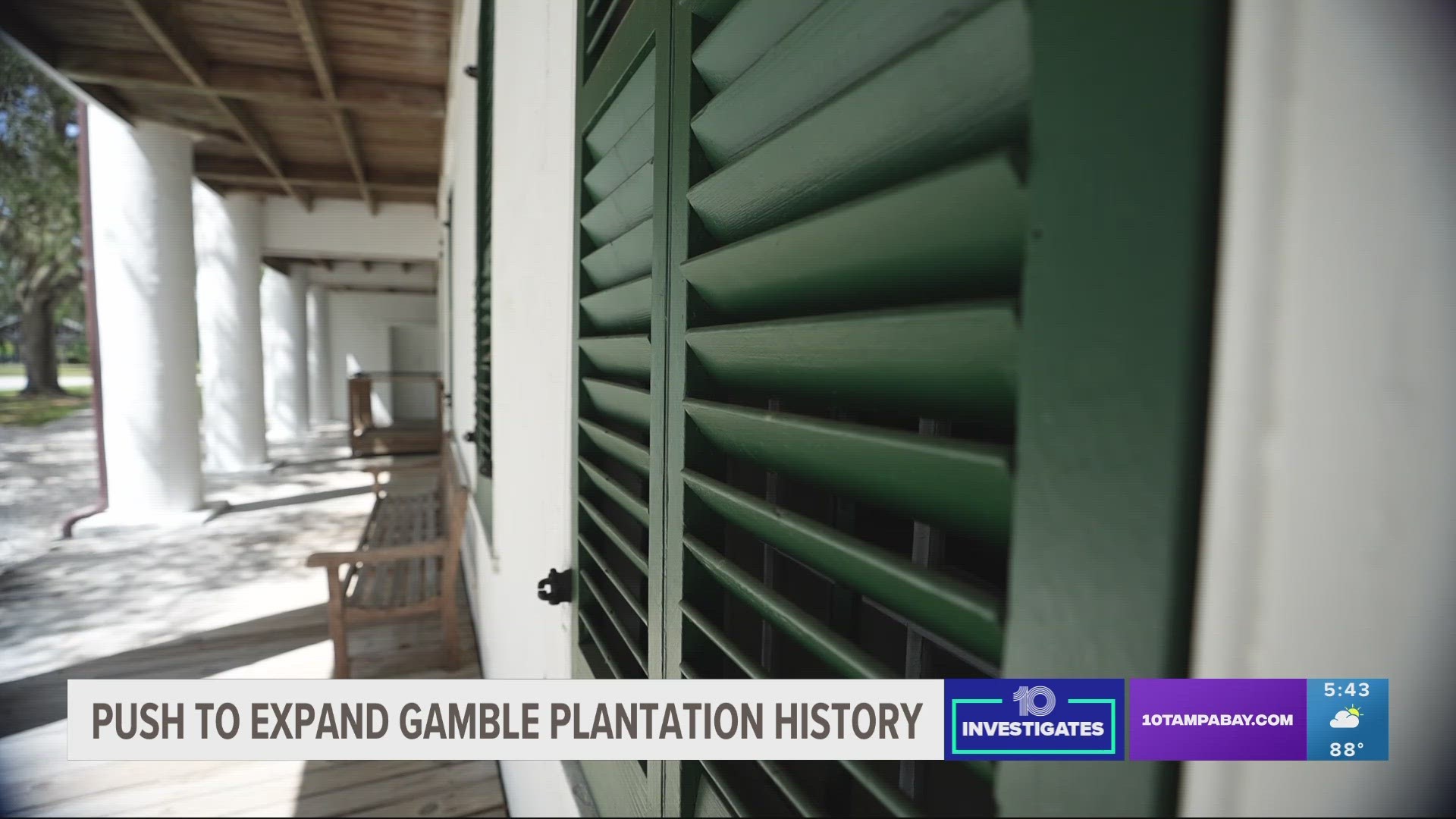This Manatee County plantation had 190 slaves at its peak. Descendants want their story told
As Florida celebrates Emancipation Day on May 20, a descendant of an enslaved laborer at Gamble Plantation calls for a more balanced version of history.

Tucked away on the side of a busy Manatee County road stands the vestige of a defining era in American history.
At its peak, the Gamble Plantation enslaved 190 men, women and children. Federal documents say they ranged in age from two months to 105 years old.
Their stories are not well known. In fact, few locals are even aware of a slave plantation in the Tampa Bay region.
Some historians say it's intentional.
A descendant says it's time for change.
Chandra's Gamble 'This is my history'
One of Chandra Carty's first visits to the Gamble Plantation was during her time as a high school student in Manatee County.


"We didn't call it a plantation, we called it a mansion. I didn't know it was a plantation until maybe, I don't know, 10, 15 years ago," Carty, who is in her 60s, said. "Growing up, this was a mansion. So, they obscured what really happened here."
Interstate signs leading to the site make no mention of a plantation — only a mansion. It's only upon arrival that a sign reads, "Judah P. Benjamin Confederate Monument" at Gamble Plantation State Historic Park.
"How would the word change from plantation?" Carty asked.

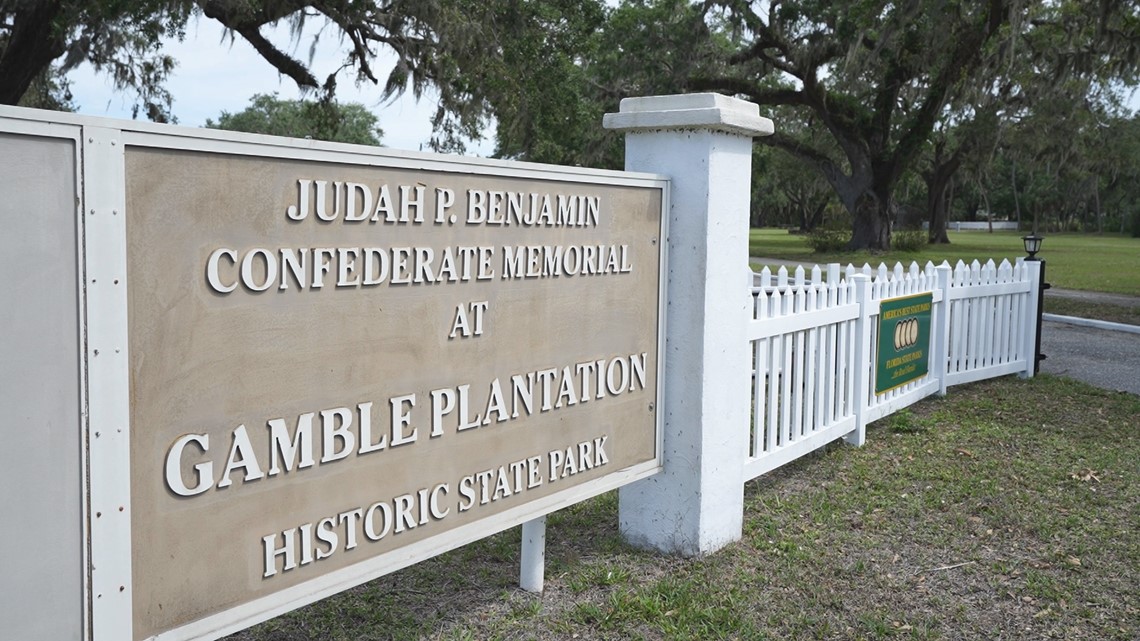
However, Carty's quest for more information about the Gamble Plantation goes beyond the name. A family research project revealed she has direct connections to the site. Her great-great grandmother, Mariah, married Nelson Burton, who was enslaved at the plantation.
"The Manatee County historical records show in 1872, two freed ex-slaves being married, and that's where our family history picks up," she said.
It's history Carty and others who study the site say is missing from the Gamble Plantation, which now as a state park focuses heavily on its Confederate themes and memorial to Confederate cabinet member Judah P. Benjamin. He served as Secretary of State to the Confederacy and stayed at the plantation for a brief time on his escape from the country at the end of the Civil War.
"To be in line with how contemporary historians, contemporary museums, anthropologists try to interpret these public heritage sites, there needs to be a significant push to foreground the stories of the enslaved laborers here," Dr. Diane Wallman, associate professor of anthropology at the University of South Florida, said.


"As you know, somebody who studies history, and believes in, you know, the thorough and full telling of history, it makes me sad that the stories of particular people that lived here, died here, worked here, are not being told," she said.
Currently, there is little on the site that mentions the experiences of the enslaved. A visit to the plantation's information center does have a typewritten list of the names of all those enslaved. However, unlike other displays, there is no museum label to describe its significance.

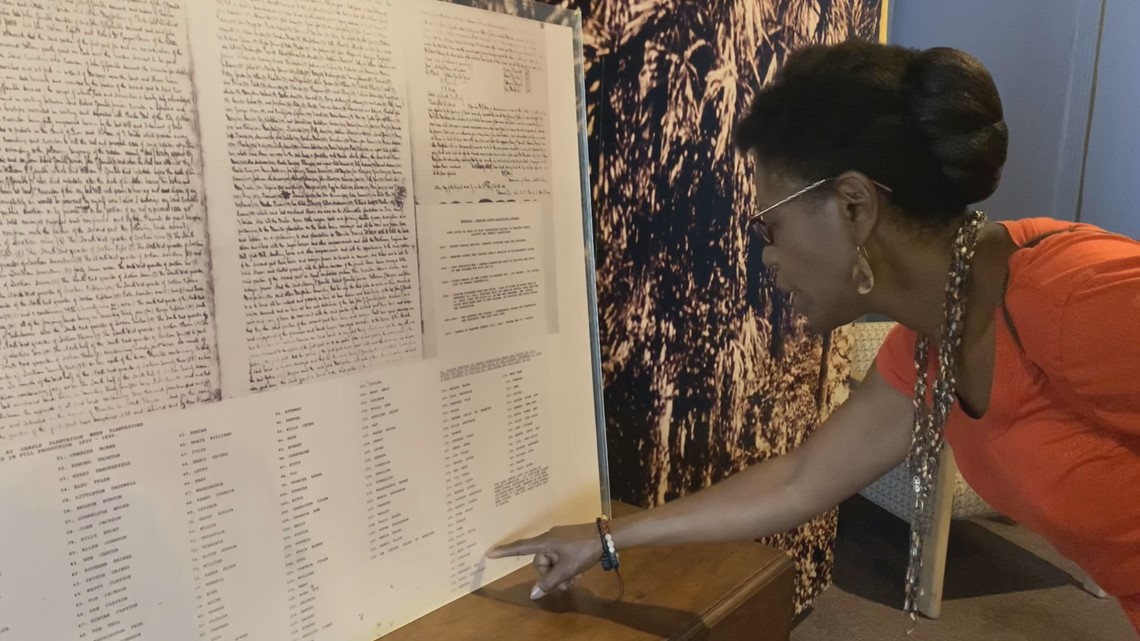
"I want to see when I go into the little information booth, to see the story of specific slaves, to see Nelson Burton's story, because life is a story," Carty said. "We need to tell the story the best that we can. Where did the slaves live? What did their day to day activity consist of?"
A big Gamble The rise and fall of the Gamble Plantation


In the early 1840s, Robert Gamble of Tallahassee, Fla., used slave labor to establish a sugar plantation on about 3,500 acres of land along the Manatee River.
Federal documents show he came to the area under the Florida Armed Occupation Act, which gave away 160 acres of land to settlers willing to develop the area and battle indigenous inhabitants.
According to paperwork filed with the National Park Service, those enslaved to Gamble lived in 57 slave cabins on the plantation. They are credited for the success of the plantation and sugar mill.
Unable to keep up with "natural disasters and a fickle sugar market," information from Florida State Parks says Gamble was driven into debt by 1856 and sold the plantation in 1859.
A path forward Reconciling past with present

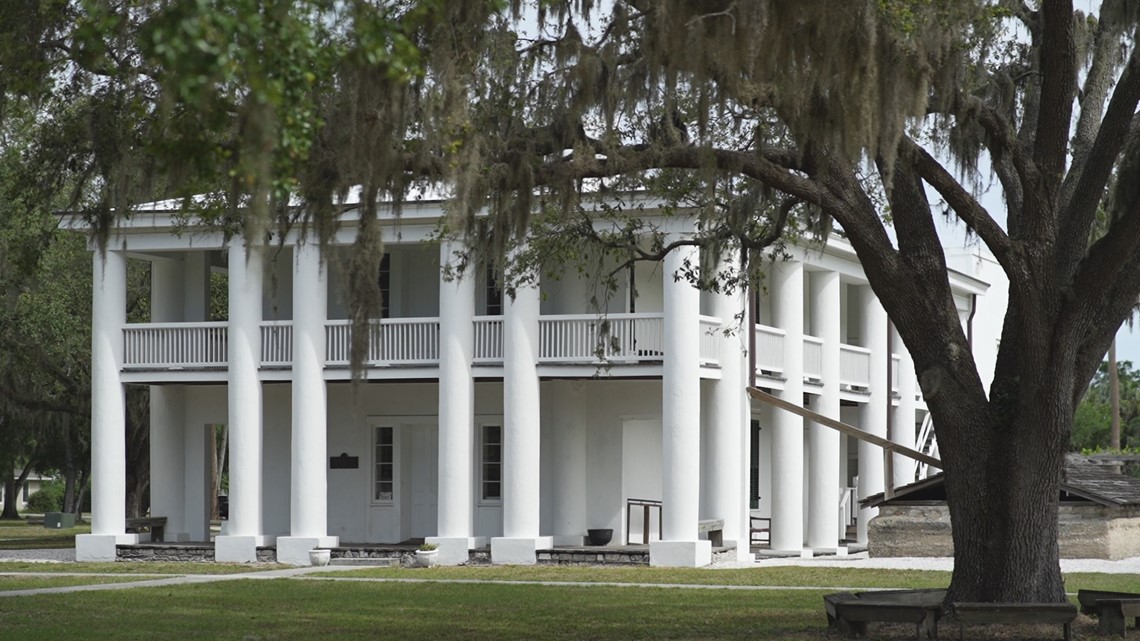
Documents filed with the National Park Service show in the 1920s, the United Daughters of the Confederacy purchased the Gamble Plantation mansion, restored it and made it a Confederate shrine.
10 investigates got records going back to the 1970s that show the UDC made an agreement with the state to limit the plantation's interpretation mostly to its Confederate themes.
When a state park leader proposed changes, he faced resistance.
"There was pushback from the state government level. There's letters from senators...supporting the UDC and folks and trying to keep this focused on the Confederacy Judah P. Benjamin and Robert Gamble," Wallman said. "it's come up in the 90s, it's come up again now, where we're trying to have these conversations about expanding the narrative here and making it more inclusive."


John Sims, the late Sarasota-based artist who based some of his last projects on reimagining parts of the Gamble Plantation said he would like to see a memorial to the enslaved at the site.
“The state should consider…funding and even through legislation being able to support efforts to memorialize the history of enslaved folks and their relationship to the various slave plantations in the state of Florida,” the late Sarasota-based artist John Sims told 10 Investigates’ Emerald Morrow before his death in December 2022.
“Let’s look at some of these former slave plantations as places that really belong to all of us, particularly descendants of African slaves who have occupied those spaces,” Sims said.
Requests for on-camera interviews with the Judah P. Benjamin chapter of the United Daughters of the Confederacy were denied, but member Evelyn Hoskins said she believes others will be open to doing more at the Gamble Plantation to honor the enslaved.
"We are all looking for answers," she said. "The slaves were just as much of the Gamble story as anyone else."
10 Investigates also reached out to the Florida Department of Environmental Protection, which oversees the Gamble Plantation Historic State Park. A spokesperson denied our request for an interview, but said in a statement:
"The Florida Park Service is committed to providing resource-based recreation while preserving, interpreting and restoring natural and cultural resources, and the agency strives to do this in a positive and appropriate manner.
"Our agency is always evaluating how we communicate Florida's unique history across all state parks, including at Gamble Plantation Historic State Park."

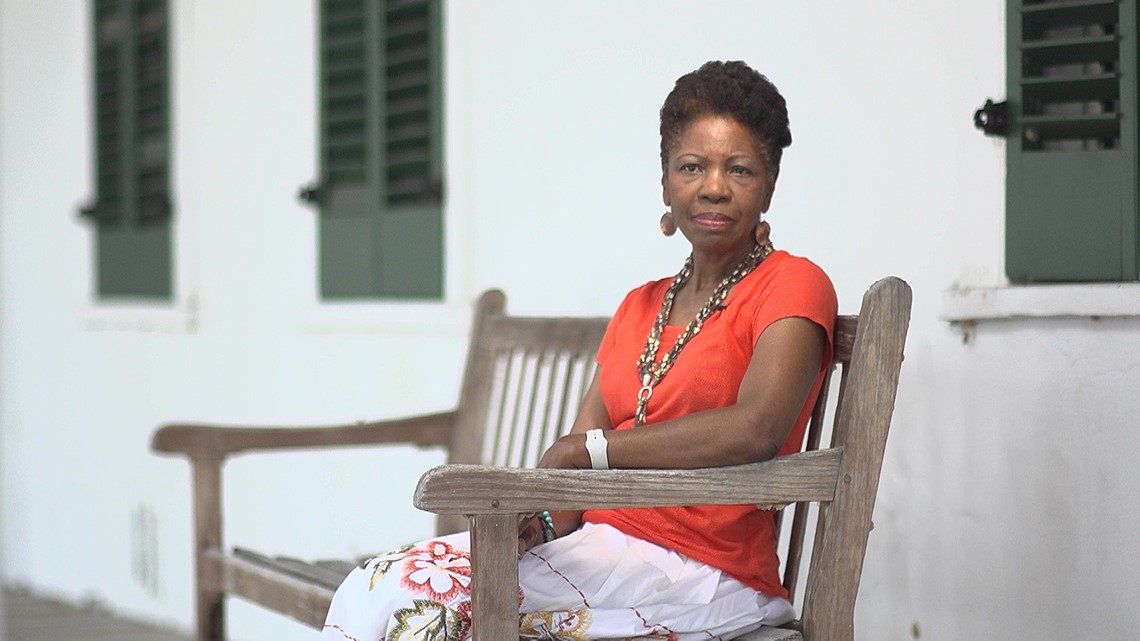
Carty remains optimistic. She said her focus’s is not on removing what’s at the site. Instead, she wants to include what’s missing.
"I just want the complete story because this is my history," Carty said. "Why would I tear down my history? Nelson had to build this? Why would I destroy?"
So, she's calling on the UDC, the state park, lawmakers and even the governor to push a more balanced version of history—one she never wants to be forgotten.
"I'm feeling hopeful," Carty said. "Hopeful that some I see the image of Nelson...the image of Mariah, and they say, 'job well done.' You finally got our story out so everybody can understand what it was like living here."
Emerald Morrow is an investigative reporter with 10 Tampa Bay. Like her on Facebook and follow her on Twitter. You can also email her at emorrow@10tampabay.com


